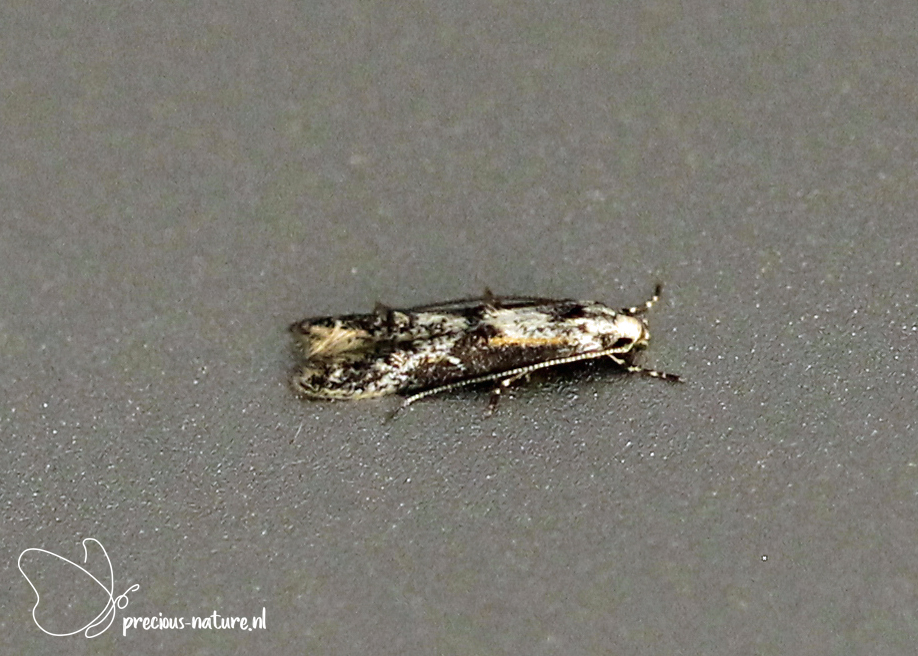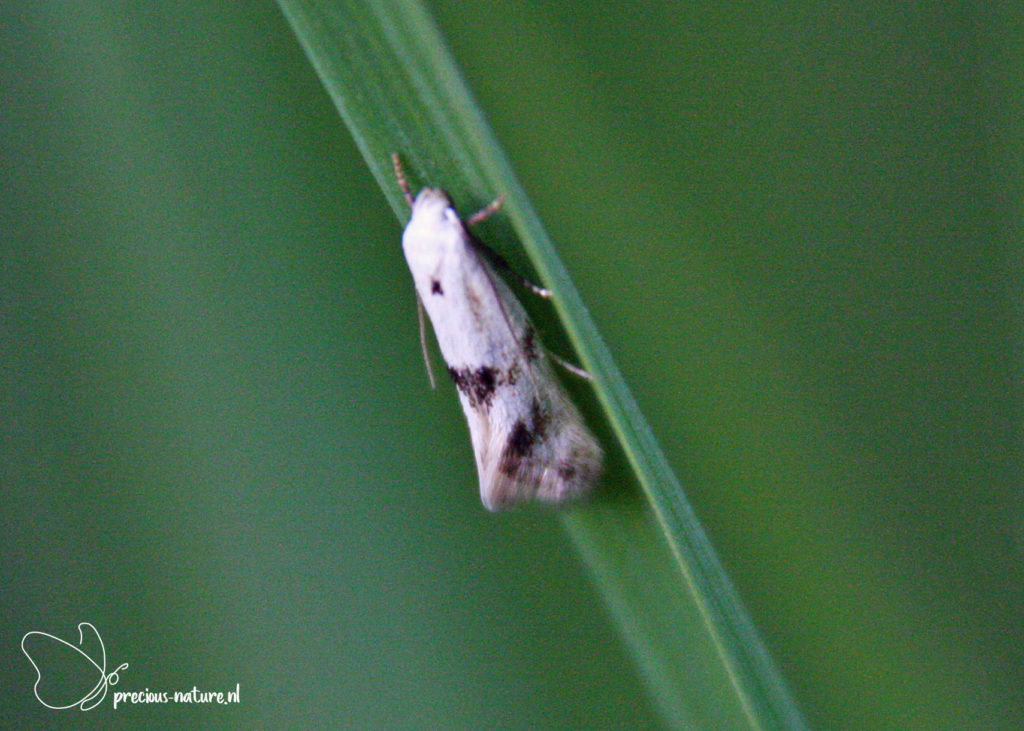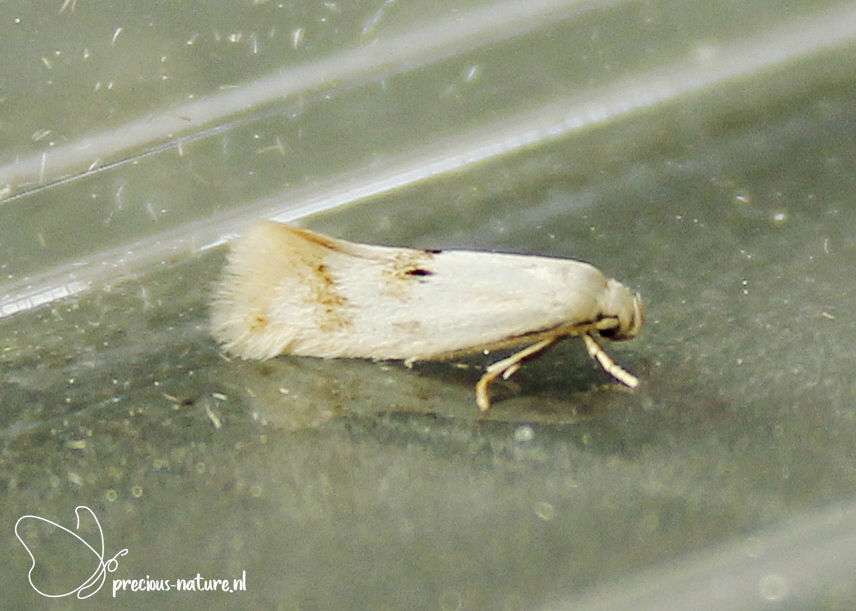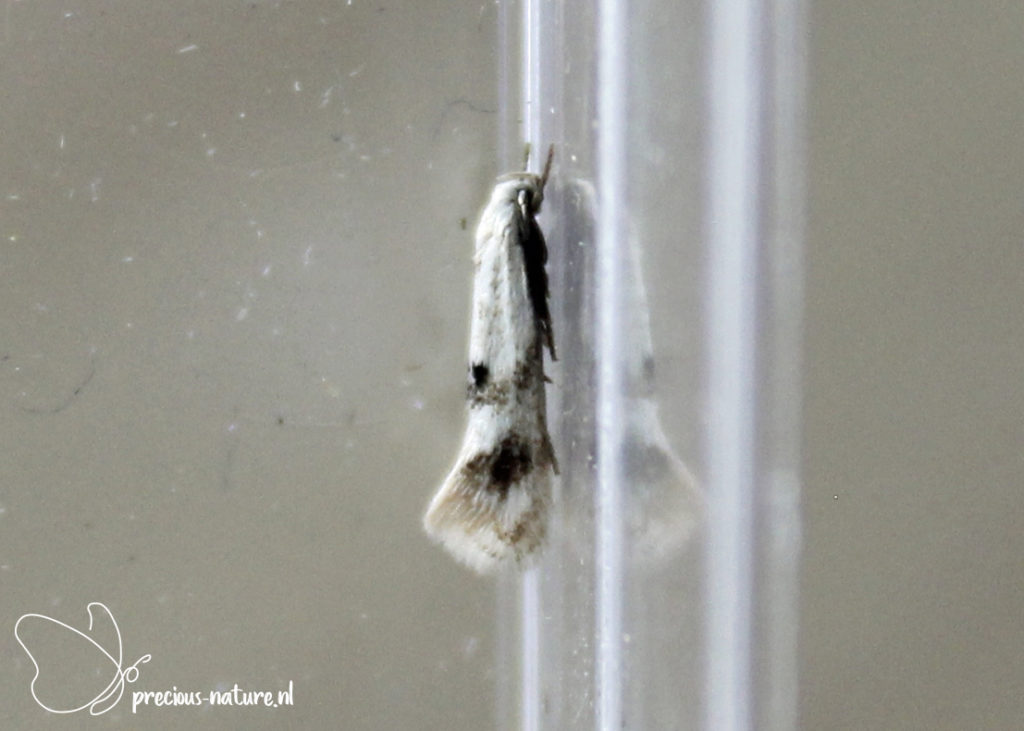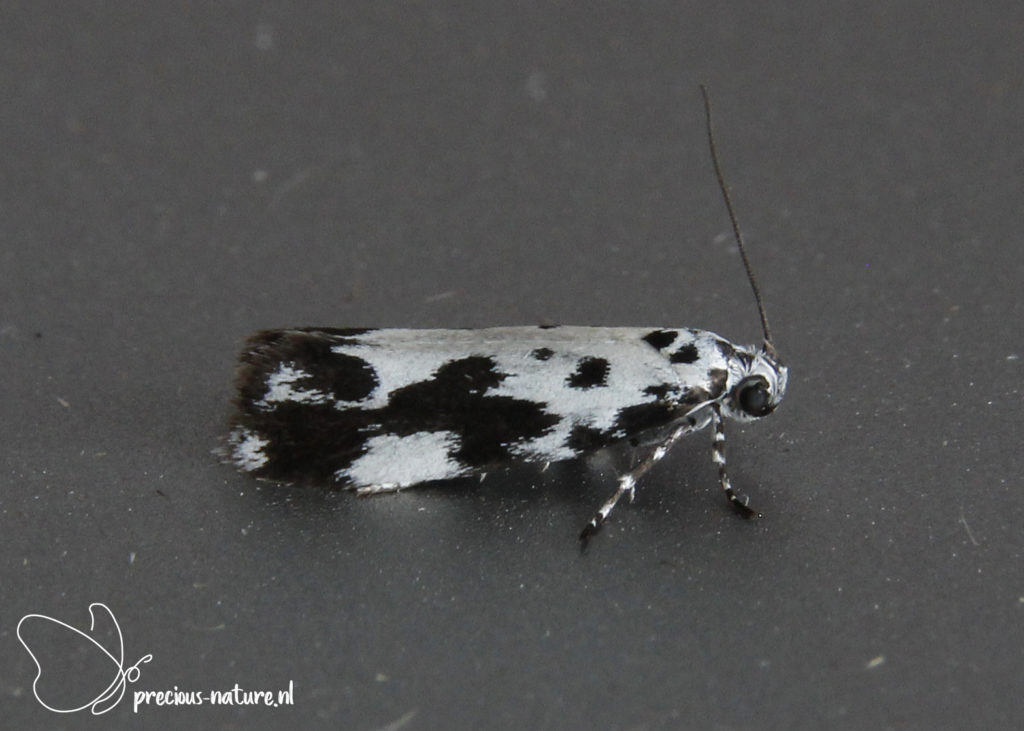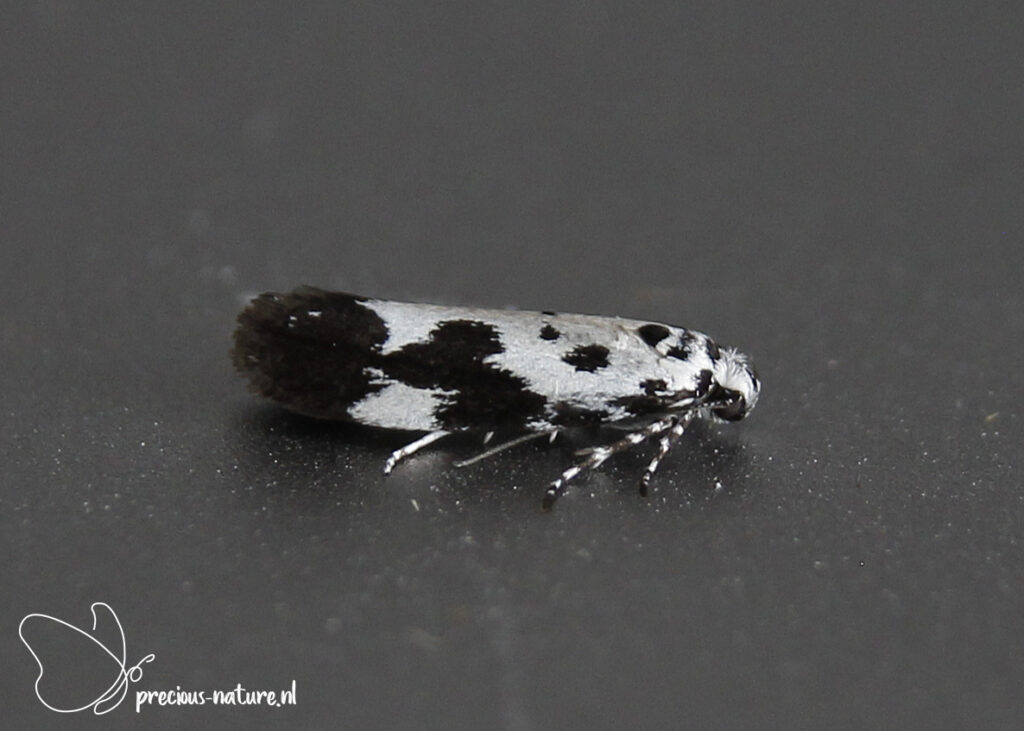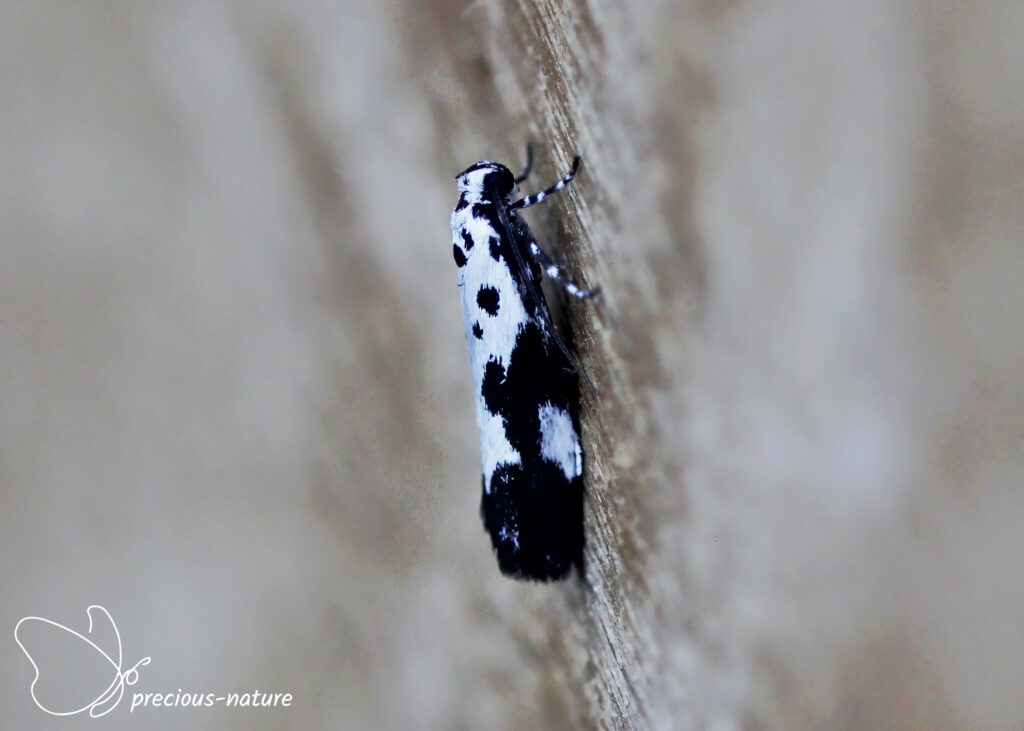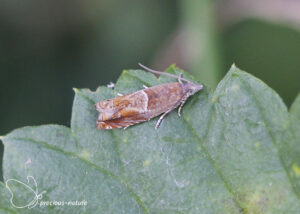The Grass Miner Moths (Elachistidae) are a family of small moths, the majority of which, in the caterpillar stage, have a leafminer lifestyle. These moths are mainly inventoried by looking for mines in the leaf. These moths are small and inconspicuous, often cryptic in both their appearance and lifestyle. The species can usually be recognised by their smooth head, long curved palps, and lanceolate forewings that are frequently white, grey, or black with white spots. The wingspan is 6-11 mm.
Subfamily: Agonoxeninae
Genus: Blastodacna
Hawthorn Cosmet – 2023 (NL)
(NCBI-index: 1.073604)
The Hawthorn Cosmet (Blastodacna hellerella) is very similar to the Apple Pith Moth (Blastodacna atra), but is smaller, lighter colored, and does not have a yellow-brown colour towards the base of the wing. The forewing is dark or black-brown with a white streak from the wing root towards the inner edge corner. At 1/3, the white streak becomes slightly narrower, and an elongated black spot can be seen. At 2/3, you can see a bright white, black-lined spot with a black spot towards the wing tip. Both the legs and the backwards-facing long antennae are alternately black and white striped. The flight period spans one generation, from May to August, and the wingspan is 11 mm. Host plant: Hawthorn. Dutch name: Meidoornkwastmot. Frisian name: –
Flying period:

Subfamily: Elachistinae
Genus: Elachista
Triple-spot Dwarf – 2019 (NL)
(NCBI-index: 1.442294)
A few times in the evening, in the same nature reserve with abundant vegetation along the water, resulted in the discovery of some new species. This also applies to the Triple-spot Dwarf (Elachista maculicerusella). This grass miner is usually found in moist areas such as near pools, ditches, and lakes where the reed grows. The forewing is white, sometimes light greyish brown, with an irregular dark brown cross band halfway and a light spot at 2/3. The hindwing is light ocher yellow in the female and somewhat darker and browner in the male. The flying period in one generation is from April to August, and the wingspan is 10-12 mm. Host plant: Common Reed and Reed Canary-grass. Dutch name: Grijsgevlekte grasmineermot. Frisian name: –
Flying period:

Subfamily: Ethmiinae
Genus: Ethmia
Comfrey Ermel – 2018 (NL)
(NCBI-index: 1.869869)
I spotted the Comfrey Ermel (Ethmia quadrillella) by accident after photographing a geometer moth that had landed on the canvas during a moth session. When checking the photo a few days later, it turned out that there was still a small striking micro-moth sitting close to the geometer moth. The forewing has a pattern of white and black patches. The apex is black with another black streak running from the costa to the centre of the wing. Closer to the dorsum are two black dots. The flying period spans from May to August in one generation, and the wingspan ranges from 15 to 19 mm. Host plant: Common Comfrey. Dutch name: Kleine zwartwitmot. Frisian name: –
Flying period:


